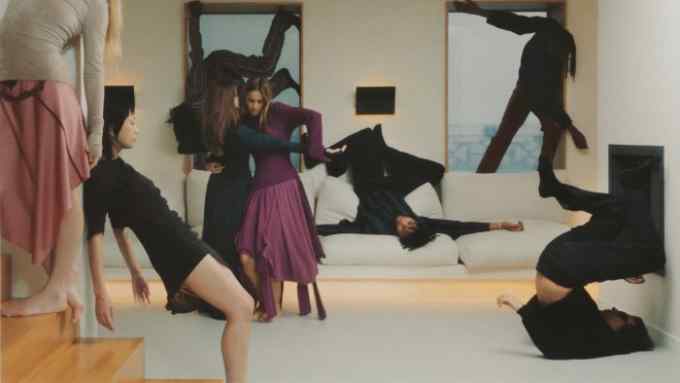Basquiat in LA

Roula Khalaf, Editor of the FT, selects her favourite stories in this weekly newsletter.
The call came one evening in November 1982. It was Larry Gagosian telling me that the artist Jean-Michel Basquiat was in Venice, California, and asking if I, as founder of the print publishing business New City Editions, would be interested in working with him to produce a new silkscreen work. It would prove the beginning of a remarkable period that saw Jean-Michel, Larry and I working closely together in Los Angeles alongside a cast who went on to dramatically change the face of music and art.
More than 40 years later, we are staging the first exhibition to focus on the work Jean-Michel made during his time on Market Street, Venice, between 1982 and 1984. I have helped bring together around 30 works, including many that have rarely, if ever, been shown in public – and reuniting several that have not been displayed together since Jean-Michel made them here.


At the time, Jean-Michel had moved from New York, and was living and working in Larry’s house on Market Street, in the beachside community. Larry had originally designed and built it to include a gallery, but he decided to turn the downstairs into Jean-Michel’s studio. He usually worked from late afternoon, often until dawn. I was mesmerised by his self-contained focus, his intensity and fluidity. He rarely conversed while painting; he was in a world of his own. Overnight, paintings would undergo a transformation. New, seemingly more complex imagery would appear, and other imagery and surfaces would be painted over and eliminated.
Although Jean-Michel had quickly adapted to the demands of newfound success, it was easy to see that he had, in some ways, become a victim of his triumphs. Although he expected and sought out the public’s attention, he expressed a difficulty in delivering to the ever-demanding New York art world – one not yet inclined to understand or even be receptive to the angst and passion of a young Black male. In Los Angeles, things were looser, Jean-Michel seemed more relaxed. The city was on the verge of a hip-hop revolution, one that he, helped and aided by two new friends, gallery assistants Tamra Davis and Matt Dike, was to become part of himself.



The co-founder of the hip-hop label Delicious Vinyl, Matt went on to produce records such as the Beastie Boys’ album Paul’s Boutique. But at the time, as well as being Larry’s assistant, Matt was well-known on the LA club scene as a DJ at the nightclub Power Tools. He introduced Jean-Michel to different people, and to this group, Jean-Michel brought in his friends from New York. I remember Spago’s restaurant coming to a standstill when Larry walked in with Jean-Michel and the New York hip-hop guys Toxic and Rammellzee.
There was also Jean-Michel’s girlfriend, Madonna, who had come out to stay with the artist, around the time of her first album release. I have fond memories of taking them to lunch at the commissary of 20th Century Fox Studios; we were seated in the raised VIP section, overlooking a crowd of actors and crew. Madonna leaned forward, pointed her finger at the assembled crowd and announced, “Someday, everybody in this room is gonna know who I am.”



Jean Michel himself released a long-playing rap single, “Beat Bop”, on his own Tartown Record Co label in collaboration with Fred Brathwaite, Toxic, A-One, Al Diaz and Rammellzee. Hearing it before release, I was incredibly excited and suggested that he place it in the leading record store, Aaron Records in West Hollywood. It wasn’t a huge hit at the time, but with only 500 copies of the original release, the first pressing has since become one of the most sought-after records in hip-hop history. (Recently, a copy was auctioned with a top estimate of $15,000, while 40 vinyls were released by the estate last November, selling for $4,000; proceeds from edition #1 went to the non-profit LA arts-education organisation A Place Called Home.) “Beat Bop” was to prove influential for subsequent generations of rap artists, but I was equally drawn to Jean-Michel’s decision to reverse the imagery for his black-and-white cover art, because this was the same “look” we were developing in our first collaborative project, the production of his first large-scale silkscreen on canvas.


Comprising 15 individual drawings and one collage on paper, it saw Jean-Michel turn his original artworks into acetates and then into one massive 8ft by 5ft silkscreen, which he titled Tuxedo (1983). For it, Jean-Michel reversed his original artwork from black images and text on a white background to white images and text on black. During production, I didn’t give much thought to his intention, but from the moment it was completed, it became clear. His decision was not merely based on an aesthetic “look” but also a means of questioning certain social and cultural assumptions around identity.
LA allowed for Jean-Michel’s undistracted focus on his art; at the same time he could have fun. During his Venice residency, he created around 100 paintings, countless works on paper and six silkscreen editions (the only editions he ever made). Today, several of those works produced in Venice are in major public and private international collections – including The Broad, the Whitney, The Museum of Modern Art, New York and The Museum of Contemporary Art, LA. Getting out of New York and the change of scenery, friendship circles and climate that came with that proved nothing short of transformative – for him and for his art.
Made On Market Street is curated by Fred Hoffman with Larry Gagosian, at Gagosian Beverly Hills from 7 March to 1 June. An accompanying book is available at gagosianshop.com
This article has been amended with regards to who was at Spago’s with Basquiat

Comments